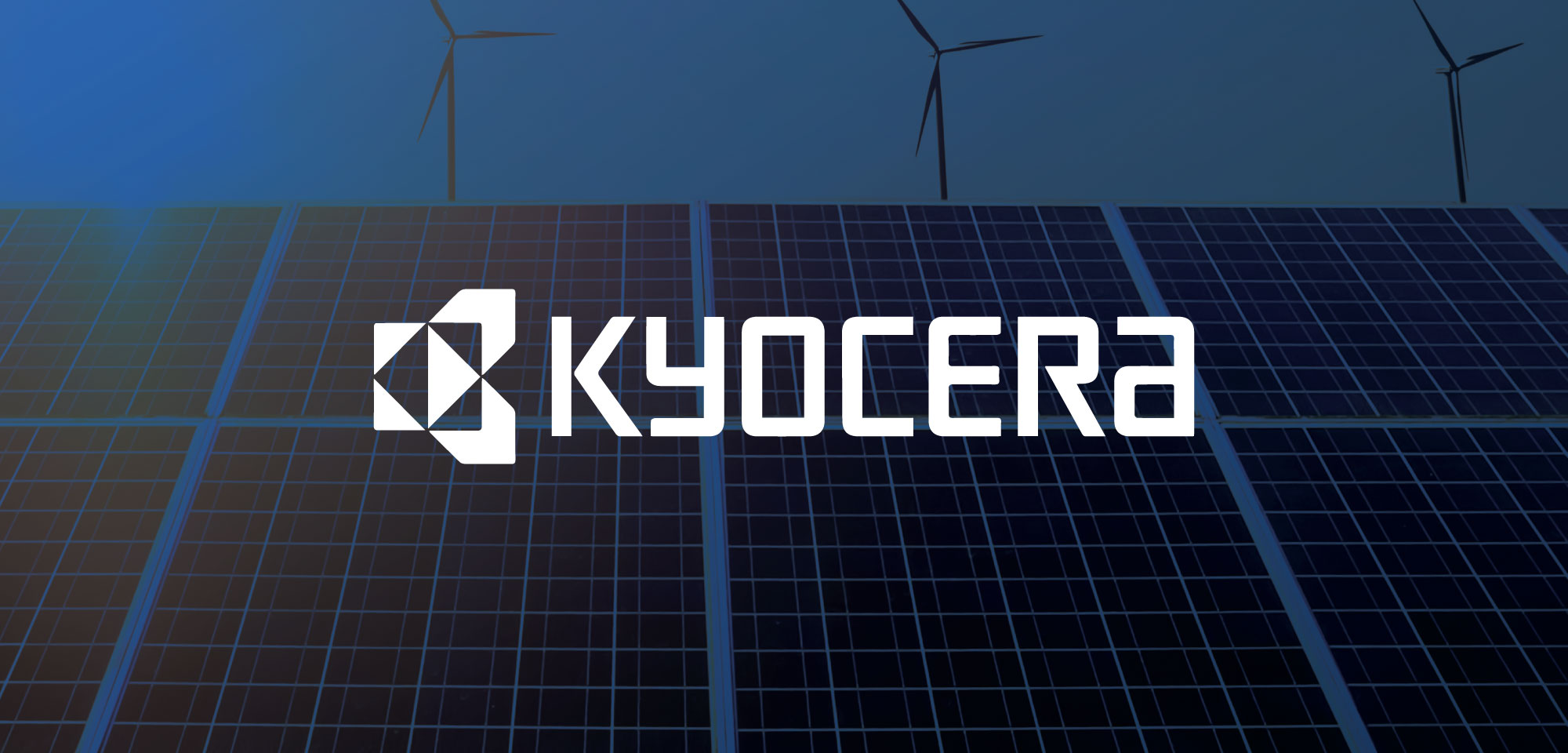
Find out what solar panels cost in your area
In addition to solar panels, Kyocera makes copiers, industrial cutting tools, ceramic kitchen knife blades, ballpoint pens, and has even started growing lab gemstones like rubies, sapphires, and opals!
With such a diverse range of products offered, you may be wondering what to expect if you purchase their solar panels for use on your RV, boat, or home. When looking at Kyocera solar panels, you should consider the company's different solar modules and their costs, warranties, and performance.
Key takeaways
-
Kyocera was one of the first manufacturers of solar panels in the world.
-
They have a strong reputation for research, ceramic applications, and innovation.
-
Kyocera solar modules have a standard warranty and are offered in a variety of sizes.
-
Kyocera panels are significantly less efficient than the industry standard, but you may find that they are budget-friendly.
Kyocera has a strong technological history
Kyocera started out making specialized ceramic parts for television picture tubes in the 1960s.
By 1975, they were on the ground floor of the solar revolution, forging partnerships with Mobil Oil, Tyco, and Matsushita Electric to use their ceramics know-how to develop more efficient solar cells.
Since Kyocera had strong roots in ceramics and casting technology, their research teams tinkered with ways to form silicon into casted molds. They found that higher-quality solar cells could be crafted this way by cutting the molds and slicing wafers out of them. Kyocera also coats its solar panels with a ceramic glaze which helps protect the panel glass from erosion and stains from ocean salts.
Kyocera was the first company to mass produce polycrystalline solar cells using a special Edge-defined Film-fed Growth (EFG) process and export them worldwide. Their researchers were also the first to figure out they could improve PV module efficiency even further by using a Reactive Ion Etching (RIE) process to cut super small ridges in the solar cells.
Those ridges increase the surface area available, allowing more sunlight to reach each cell, as shown in the below image.
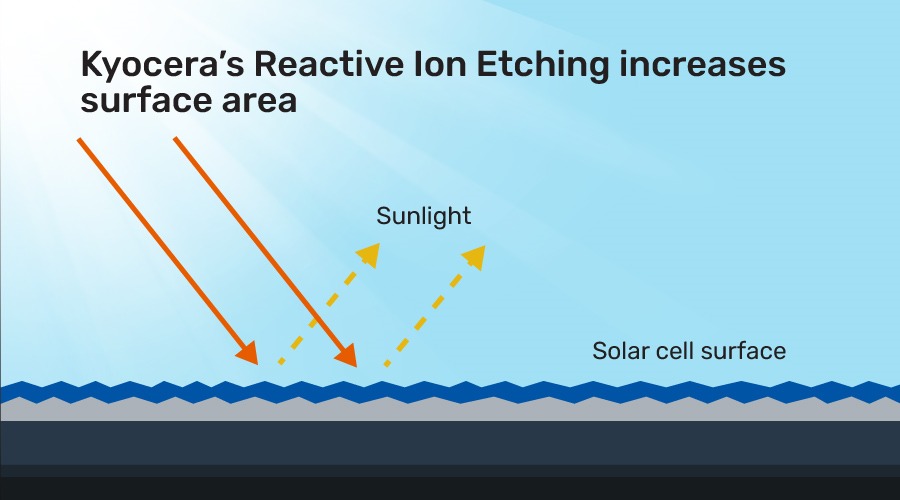
When you purchase Kyocera solar modules, in many ways you are supporting a long tradition of quality improvement and research.
While other companies may win awards of many stripes for all kinds of engineering feats, you can rest assured that you’re getting a quality product from one of the pioneers of the solar cell industry when you go with Kyocera panels.
Current Kyocera module types and warranties
Currently, Kyocera offers the following solar module types:
A heavy duty 330 watt, 80-cell module for commercial applications
A standard size 60-cell module, ranging in output from 245 to 320 watts
A smaller 145 watt, 36-cell module
They all come with a standard 10-year workmanship warranty and a 25-year power output warranty at 90% of their original energy capacity.
On certain solar power kit websites and Amazon, you can usually find older Kyocera photovoltaic panels that are paired with charge controllers, electrical connectors and small inverters. Of note, Kyocera used to produce smaller 45 watt and 12v solar panels for RV, off-grid, or boating purposes, but have since discontinued production.
Kyocera’s most popular solar panel models
Take a look at three of their most popular current models and their corresponding spec sheets, which include amps, volts, weight, and dimensions.
KD 300-80 F Series
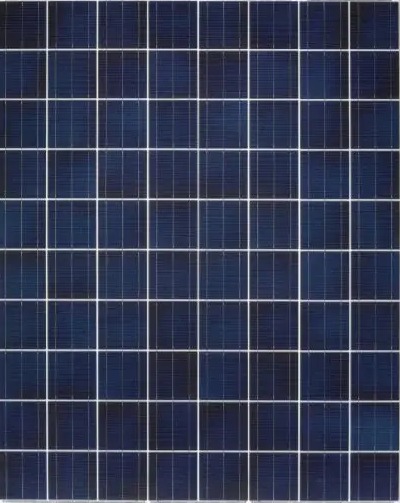
These oversized 300-plus-watt Kyocera panels include 80 cells per module, weigh about 60 pounds each, and are about 65 inches long, 52 inches wide, and have a depth of roughly 2 inches. Get a more in-depth look at the specs here.
KD 200-60 F Series
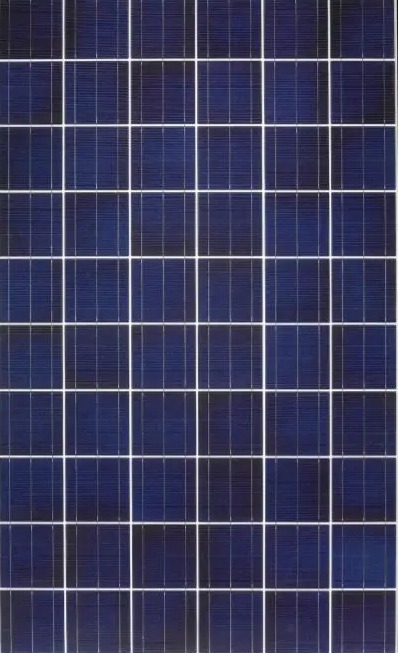
These traditional-sized 200-plus-watt Kyocera panels offer 60 cells per module, weigh about 44 pounds, and are about 65 inches long, 39 inches wide, and have a depth of roughly 2 inches. The spec sheet can be found here.
KD 145 SX-UFU Series
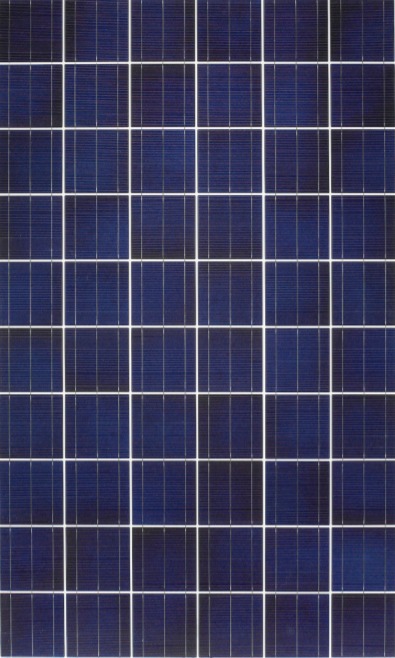
The smaller 145-watt Kyocera panels offer 36 cells per module, weigh about 28 pounds, and are about 59 inches long, 26 inches wide, and have a depth of roughly 2 inches each. Get the full rundown of these panels here.
All have anodized aluminum frames and sunlight-reflecting white back sheets, which helps keep temperatures down for optimal performance while producing energy.
Kyocera solar panel costs
Current Kyocera installed module prices range from $2.75-$3.25 per watt, though installers may offer lower pricing for your solar panel system.
The cost is at the low-to-average price across all solar panel manufacturers. Use our calculator below to explore how much solar panels cost near you and see which tax credits and incentives you qualify for.
Kyocera module performance
In terms of performance, there are two main ways the industry measures all panels against each other.
The first way is measuring the electricity output efficiency of each panel type. The second way is determining how well the panel performs when exposed to less than ideal temperatures. Below, we’ll explore how Kyocera solar panels perform on each of these measures.
Solar module efficiency
When we talk about solar panel performance, we mean that some solar panels are better than others at converting available sunlight into electricity in the same size footprint.
For reference, the industry standard for panel efficiency is now over 20%, and the top models from the efficiency leader, Maxeon, can convert more than 23%. Kyocera’s models are a little more economical, but have a significantly lower conversion efficiency range of 15-17%.
Temperature coefficient
Another way to gauge solar panel quality is by measuring electrical output at gradually increasing temperatures. Solar panel performance degrades as temperatures rise, and the rate of degradation is referred to as a “temperature coefficient”.
Kyocera panels have an average temperature coefficient of -0.45%. That means, for each degree Celsius of heat added over the highest possible efficiency conditions of 25° C (77° F), Kyocera panels tend to output about 0.45% less electricity.
Again as reference, the industry standard temperature coefficient is around -0.35%, and a premium Maxeon model has a temperature coefficient of -0.29%. This means Kyocera solar panels are significantly worse at standing up to the heat compared to other products on the market.
Final thoughts on Kyocera solar panels
Kyocera may have been one of the pioneers of the solar energy industry, but their current products aren’t up to snuff. If you’re looking for a solar panel for your RV or rustic off-grid cabin, Kyocera’s offerings will be fine, but they can’t compete with modern solar panels meant for home rooftops.
To get started on your solar journey, check out our calculator below, which takes into account your specific roof, your home’s energy needs, and more.
Dan is a solar journalist and content advisor with SolarReviews. He also works with solar installers and solar nonprofits to develop and execute strategic plans. Dan Hahn founded residential solar energy information and policy resource, Solar Power Rocks, in 2007. As the site's chief architect and senior editor, he developed a national framework for evaluating the impact of residential solar energy policy. Possessed with a mission to communicat...
Learn more about Dan Hahn